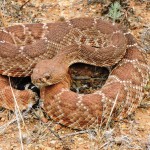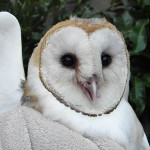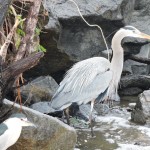If you take care of it, they will come.
Ranger Todd Nordness is talking about our open spaces and the wildlife that resides there.
As an employee of Center for Natural Lands Management, he spends his days watching over the welfare of Carlsbad’s ecological preserves and their flora and fauna.
The center is a nonprofit that manages, restores and rehabilitates open spaces throughout California and Washington State.

“The big thing is to keep the plant life healthy,” preaches Nordness, who patrols 15 area preserves, but spends half of his time in Lake Calavera Preserve. “We must do this to keep and attract wildlife.”

As he goes about his rounds, Nordness is never without his Nikon, which captures up-close-and-personal images of many of the animals who call these sensitive habitats home.

“I know if I didn’t carry my camera, I’d see Sasquatch,” he jokes.
Sadly, it sometimes looks as if Sasquatch (Bigfoot) has lumbered through these undeveloped spaces, which are surrounded by development and offer easy access.
Visitors let their dogs run free, fail to clean up after their dogs and drop trash wherever.
“People need to keep their dogs on a leash and clean up after them, especially now because springtime is nesting season,” Nordness explains. “Urine and fecal matter leave scents, and bobcats are territorial. When they smell dogs, it causes them to leave.”
Off-trail use by bicycles also can leave lasting destruction.
“The soil on the coast is sandy and going off-trail scars (the land) forever and causes erosion.”

When 52-year-old Nordness, a veteran ranger of 20 years, says he loves his work, he means it. For one thing, he lives in the Tri-City area, “so all the places I work at are in my backyard. Philosophically, I’m an environmentalist at heart.”
For another, Nordness’ main job is educating the public about the benefits and care of these habitats.
“I love talking to people and everyone likes talking to the ranger. I’m a walking information booth. On a weekend, I might talk to 200 to 300 people in Calavera. They want to know about the plants and animals, the rattlesnakes and mountain lions. Kids interact with the ranger and they enjoy it.”
And then there are those close encounters with wildlife that he records with his ever-ready camera.
“I spend so much time in the field, which affords me the time to come across such wonderful wild things. Even the most enthusiastic nature lover could not pile up the hours that I spend in the outdoors.”
Finding wildlife not only requires time but patience and silence, too.
“In such a busy world, you need to take your time and use all your senses and see what’s around you,” Nordness advises. “I think I have a real calm about me; the animals have a sense about that.”
E’Louise Ondash is a freelance writer living in North County. Tell her about your travels at [email protected]






